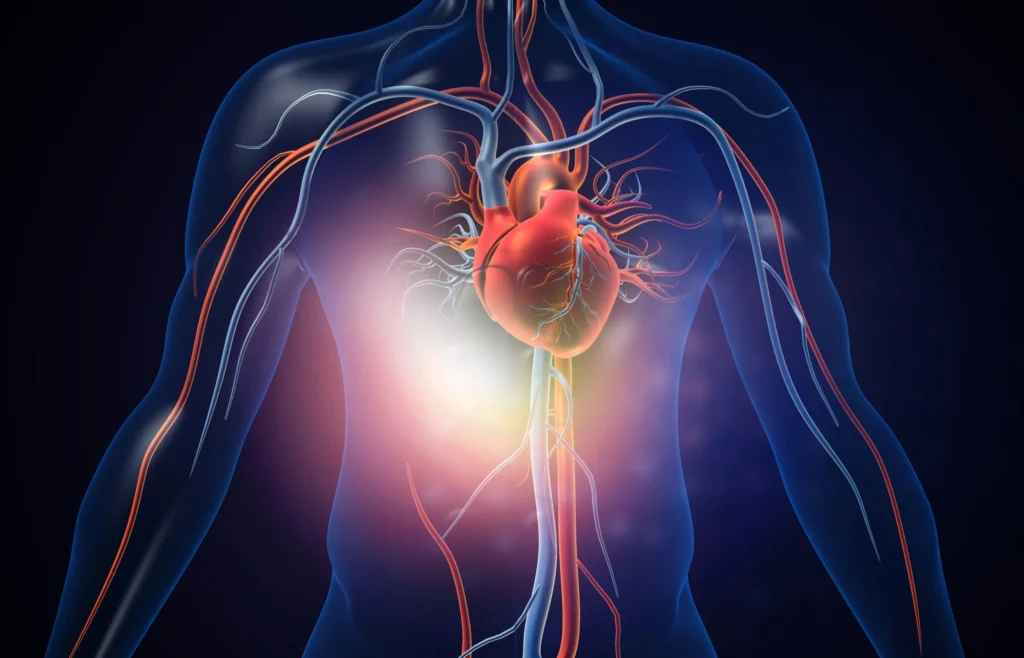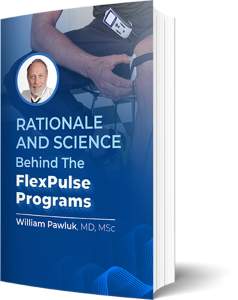
Optimal circulation keeps your body healthy and functioning properly. When your circulation system is working as it should, blood, nutrients, and oxygen efficiently move to where they are needed. If blood flow and circulation are impaired, you may begin to notice uncomfortable symptoms.
When you increase blood flow and improve circulation, you can avoid more serious health conditions that result from extended periods of poor circulation. PEMF therapy can help you regain good circulation and keep your blood flowing smoothly through a variety of mechanisms. Increased circulation is considered one of the top benefits of PEMF therapy, as it helps heal the body at a cellular level. Improved circulation with PEMF therapy helps reduce swelling, increases delivery of nutrients to tissues, and boosts immune function.
Signs of Poor Circulation
Because poor circulation can ultimately lead to much more serious health conditions such as heart attacks, stroke, gangrene, and poor wound healing, among others, it’s important to recognize the signs of reduced circulation.
Some of the most common symptoms, depending on where it happens, include numbness or pain in extremities, exhaustion, vertigo, atypical headaches, sensitivity to cold, swelling, dry and flaky skin, hair loss, and shortness of breath. While all of these symptoms can be the result of other factors, poor circulation should be considered. If blood flow is determined to be the problem, PEMF therapy is a safe, effective treatment option to consider.
Lack of physical activity, smoking, and poor eating habits are a few lifestyle choices that can have a direct impact on the quality of your blood circulation. Changing some of these habits in conjunction with regular PEMF therapy can restore circulation to its normal state and reduce these uncomfortable symptoms.
Addressing circulation issues with PEMF therapy can also help you avoid developing more serious problems since you’re treating the actual circulation problem, not just covering up symptoms.
How PEMFs Work to Improve Circulation and Blood Flow
PEMF Therapy increases blood flow and improves circulation through a number of different mechanisms: promoting dilation of blood vessels, reducing edema, reducing platelet adhesiveness, reducing fibrinogen and improving fibrinolysis, changing pliability of red blood cells which helps them move through capillaries, reducing inflammation, and decreasing viscosity of blood.
Dilation is important to healthy circulation because when blood vessels are wider, blood flows more smoothly. When blood vessel cells are healthy, blood vessels produce nitric oxide better. The endothelium, which is the inner lining of the blood vessel, uses that nitric oxide to let the muscles in the blood vessel wall know they can relax, which allows the vessel to open up. This increases blood flow, decreasing both blood pressure and heart rate. PEMFs have been shown to increase nitric oxide, which promotes this dilation.
Viscosity or “thickness” of the blood can be a problem both where the injury occurs and systemically. When inflammation increases, viscosity also increases due to increased fibrinogen, C-reactive protein, clumping of platelets, and higher protein content in the vascular and extravascular areas.
Higher viscosity can impair the delivery of nutrition, hormones, and other needed chemicals to local tissues, exacerbate inflammation, and increase the likelihood that clots or thrombosis will develop. Clots and thrombosis can each lead to major issues such as stroke, heart attack, and pulmonary embolism. PEMFs address several of the mechanisms at once that increase viscosity.
Improved circulation helps your body deliver nutrients where they’re needed, repairs molecules, increases oxygen, eliminates waste, and stimulates growth factors, among other vital processes.
Scientific Support for PEMF therapy to improve circulation
A vast body of research has been conducted to study the benefits of PEMF therapy. There is ample evidence in this research showing the positive impact PEMFs have on circulation.
One 2018 pilot study using rats investigated the effect of PEMFs on blood circulation in an ischemic skin model measured with laser-speckle contrast-imaging. Researchers found that in certain blood vessels in the PEMF group, blood flow increases more than in the initial condition, leading them to conclude that PEMF at a frequency of 1 Hz and intensity of 10 mT (100 Gauss) improves blood circulation (Lee, et al).
In another study, researchers found that PEMF stimulation in rat brains significantly dilated cerebral arterioles, increased volume of blood flow, and increased tissue oxygenation. In other work looking at blood flow, with thirty minutes of PEMF treatment improvement lasted for at least three hours. (Bragin, et al).
A study in healthy humans volunteers demonstrated that a hand-held, low-frequency device increased blood flow in the hand significantly and this impact lasted for several minutes before gradually disappearing (Funk et al).
Finally, a study used thermography, a standard tool for assessing circulation, to detect the impact of PEMF therapy on circulation. At the skin, the intensity of the PEMF was 7000 Gauss (0.7 T). It was applied at a pulse rate of 1 per second for ten minutes in healthy individuals, using their own limbs as controls. The thermogram images clearly showed a significant increase in circulation between parts of the body stimulated with PEMF and those that were not. (Sook).
These studies are just a few that demonstrate the effectiveness of PEMF therapy on increasing blood flow and improving circulation. These improvements can be helpful to a range of conditions, such as speeding the healing of wounds, treatment of TBI and other neurological conditions, improved cardiac function, and overall health and wellness.
How to use PEMF therapy to boost circulation
PEMF therapy can be delivered in clinical settings or at home. Devices range from full body mats to smaller, more portable units that can be used anywhere, such as the FlexPulse devices.
When you notice signs of poor circulation in your extremities, targeted treatment can help improve blood flow in the specific areas it may be blocked. Not only will cramps, pain, and swelling subside with this treatment, but overall circulation will improve, helping your body remain healthy. As damaged cells are repaired and able to function properly, tissues will also be able to heal.
The FlexPulse G2 PEMF is lightweight and portable, making treatment possible on any part of the body, anytime, anywhere. Ten programs ranging from 3 Hz to 1000 Hz offer a wide range of benefits, including improved circulation when you place the PEMF pads on areas affected by poor circulation.
Contact our team for more information or to purchase a FlexPulse G2 PEMF therapy device today!
References:
Bragin, D. E., Statom, G., Nemoto, E. M. Stroke. Vol. 44, 2018. Suppl-1. Pulsed Electromagnetic Field (PEMF) Increases Microvascular Flow And Tissue Oxygenation In the Normal Rat Brain.
Funk, R. H., Knels, L., Augstein, A., Marquetant, R., & Dertinger, H. F. (2014). Potent stimulation of blood flow in fingers of volunteers after local short-term treatment with low-frequency magnetic fields from a novel device. Evidence-based complementary and alternative medicine : eCAM, 2014, 543564. https://doi.org/10.1155/2014/543564
Lee, N., Park, J., Choi, Y. Kim, J., Jung, B. & Lee, Y. (2018) Effect of pulsed electromagnetic fields on the blood circulation in ischemic skin models: A pilot study, Electromagnetic Biology and Medicine, 37:4, 202-207, DOI: 10.1080/15368378.2018.1523798
Sook, L. ee Hyun. (October 2011) Effect of Pulse Magnetic Field Stimulus on Blood Flow using Digital Infrared Thermal Imaging. Lee Hyun Sook. J Korean Magnetics Society, 21 (5), 180-184.

